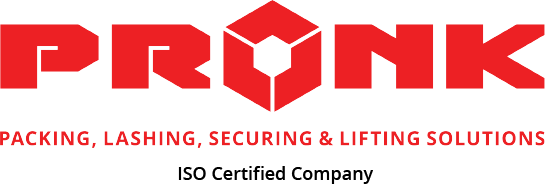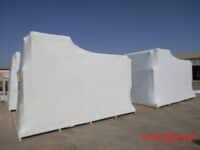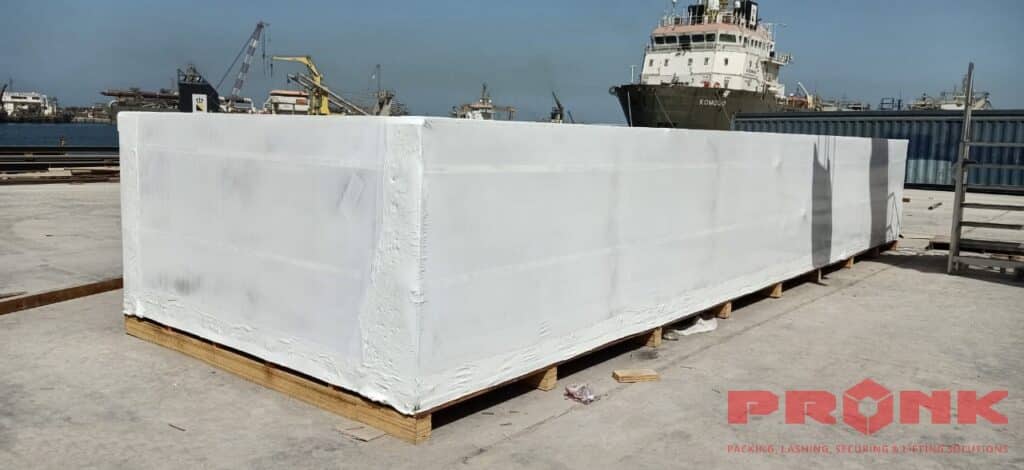Pros and Cons of Heat Shrink Wrapping
Heat shrink wrap, also known as heat shrink film, is one of the most popular shrink packaging materials used in the world. As the name suggests, the packaging material shrinks around the product when exposed to heat and provides a layer of protection during transit and storage.
Advantages of heat shrink wrapping
Made of polymer plastic film, heat shrink wrap is available in a variety of thicknesses, clarities, strengths and shrink- ratios. Each type can be used as standalone packing material or in combination with another heat shrink wrap material type to create the required layering and protection for the product.
Once the plastic film is wrapped around the product, it is exposed to heat using a conveyor heat tunnel or an electric or gas heat gun which shrinks the plastic around the product and seals it. Heat shrink wrap can be recycled and remade for future uses.
Heat shrink wraps are being widely used for the following:
- Primary packaging solution in the manufacturing industry
- Protection of large machinery that is not in use
- Marine shrink wrapping of boats and other vehicles
- Scaffold wrap containment of buildings
- To quarantine entire buildings where hazardous chemicals or materials may have been exposed
- Packing palletized freight and securing boxes
- To advertise products and brands, as heat shrink wraps are printable
Disadvantages of heat shrink wrapping
The three main types of films used in heat shrink wrapping are polyvinyl chloride (PVC), polyolefin (POF) and polyethylene (PE). They come with their fair share of shortcomings such as:
- PVC softens and wrinkles if the temperature gets too high. And, it becomes hard and brittle if it becomes too cool.
- On heating, PVC releases strong, harmful odors. Hence, heat shrink wrapping should be done only at well-ventilated locations.
- Due to the chemical composition and harmful by-products of PVC, many countries have banned its use.
- Polyolefin is expensive compared to PVC film. Also, it may require perforations in some applications to avoid air pockets or bumpy surfaces.
- Polyethylene has a low shrink rate of around 20% and is not as clear as other films. Plus, it is more expensive than other films.
Common Problems of Heat Shrink Wrapping
Heat shrink wrapping is cost-effective and space-saving; however, it is not a foolproof packaging solution. Most common problems arise from improper handling of heat shrink wraps or heating devices. Simple solutions for heat shrink wrapping problems include using the heating device at the right temperature, conveyor speed, air velocity of the tunnel or something as basic as choosing the right heat shrink wrapping film depending on the use.
Problems heat shrink wrapping display include:
Dog Ears
Resembling a dog’s ear, these are the triangular protrusions of the film on the corners of a package. They occur due to insufficient shrinkage of the film, causing the corners to not shrink enough. It can be avoided by applying more heat to the shrink film or by using high-quality films.
Ballooning
Heat shrink wrap ballooning happens when the shrink film is exposed to hot air after sealing. The air inside the wrap expands and causes the film to balloon. This can be solved by using film with vent holes, also known as a pre-perforated film, which allows air to escape as the film shrinks around the product.
Burn Holes
Burn holes occur when too much heat is applied to the shrink film. It can be easily avoided by ensuring that the film is exposed to the right temperature while sealing.
Fish Eyes
Fish eyes are round or oval patterns that arise in the plastic due to insufficient shrinking caused by a lack of heat or bad air velocity. Proper maintenance of the heating element can solve this problem.
Shrink Film Tears
Tears in heat shrink film are often caused by the type of shrink film or the thickness of the film being used. Switching to a different kind of film would fix this heat shrink wrapping problem.
In Conclusion
Heat shrink wrapping is an easy way to ensure your products are safe. It offers many types of flexible packaging film options to ensure complete protection of your product. Be it robustness or recyclability and sustainability, there is a heat shrink film to match every business needs.



